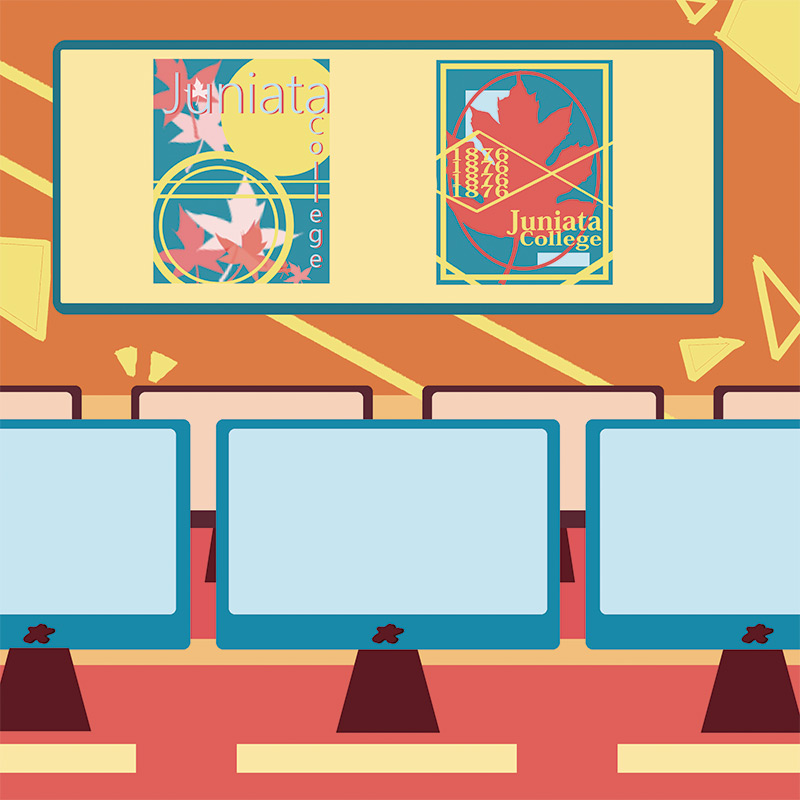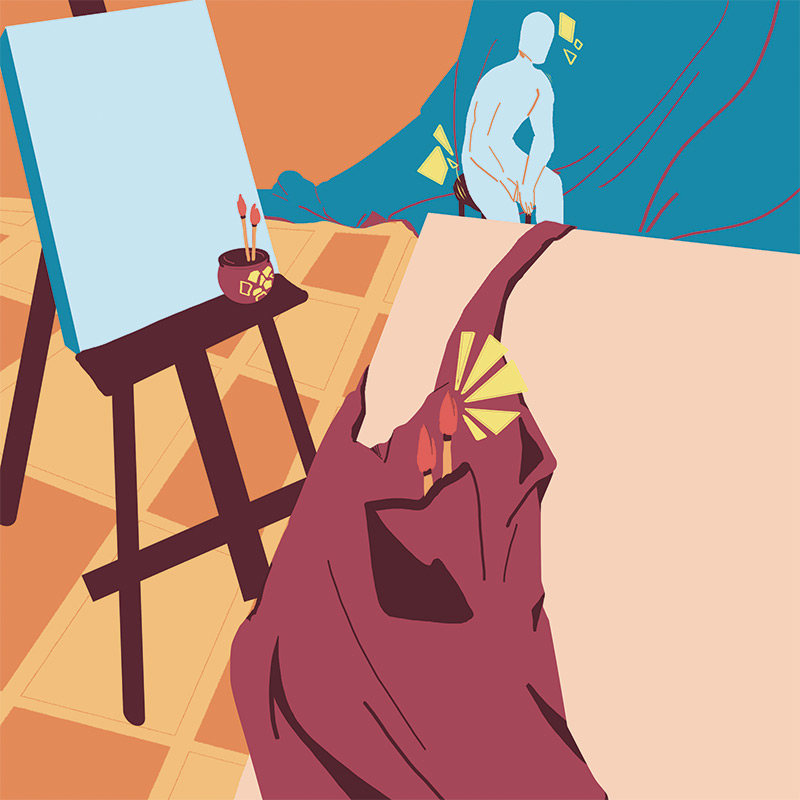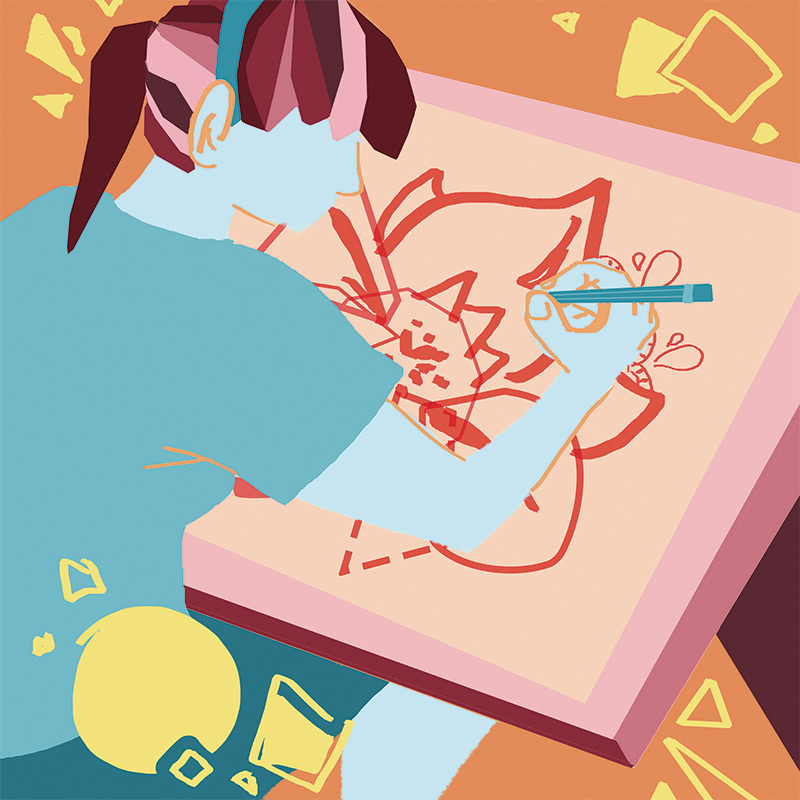
On every college campus, in every state, there are buildings and rooms named after people. In most cases, these building and other facilities are named after alumni or philanthropists. For instance, Pennsylvania campuses are literally littered with Carnegie libraries (Penn State and Juniata both have one), funded by 19th-century industrialist Andrew Carnegie.
Although everybody has an idea who Andrew Carnegie was, many times the significance of the people campus buildings are named for are often lost to time. For example, Ohio State's Hayes Hall. Named after Woody, right? Not quite. It was built in the 1880s and is named after Rutherford B. Hayes, one of history's more obscure presidents.
Juniata is not totally immune to such vagaries of memory. Most folks on campus don't have any idea who Leon A. Beeghly was (a Youngstown, Ohio magnate who owned the Standard Slag Co.), or recall much about J. Omar Good (an 1890s alumnus who owned a Philadelphia printing company).
One way that Juniatians honor the namesakes of many of its beloved buildings is by repeating the stories behind the gift or donation. The tale of Bill von Liebig's woven medical stent or Maude Lesher's short life, are repeated often enough to qualify as a sort of tradition.
When John Dale '54 walked to the podium at the groundbreaking of the new Integrated Media and Studio Arts Building to reveal its namesake, he had a reason for honoring the couple he was about to name. It might be better, however, if the honoree told the story.
"To say we were stunned would be an understatement. I have been involved with art for a long, long time and I have been involved at Juniata for a long, long time and John brought those together," says Tom Kepple, president emeritus at Juniata. Tom and his wife, Pat, were at the groundbreaking of the new building when Dale proclaimed the name as the Thomas R. and Patricia Kepple Integrated Media and Studio Arts Building.
"We had gone to dinner with John the night before and he never said a thing!" says Pat Kepple.
Although Tom Kepple was rarely seen around campus lugging an easel and paints, his connections to art reach back to his childhood in Murrysville, Pa. He took art classes in high school and college and astute observers to the College's previous presidential house would have seen several original Kepple artworks hanging on the wall.
Pat Kepple also enjoys art, never failing to comment about campus art or visiting an exhibition opening at the College's art museum. She does dabble in painting as well. "My specialty is doing what the art teacher tells me to do," she says with a wide smile. "All my art hangs near the back stairway of the house."
Dale and his wife, Irene '58, knew of the Kepples' commitment to art and both had decided long ago that they would ask the College to honor its 11th president through the building. Dale, whose $3.2 million gift helped fund the arts facility, also knew that his vision and Tom Kepple's vision for the arts at Juniata lined up perfectly.
When Tom Kepple was hired in 1998, John Dale was the first trustee to contact him and Dale took the couple to dinner. During the meal, Dale and Kepple talked about their ideal liberal arts college and found a shared belief in the importance of the visual arts. Both Tom and Pat Kepple credit this dinner with assuaging any nervousness or trepidation at taking the job. Pat, a native Tennesseean, was nervous about leaving family connections behind if she moved north and credits Dale with convincing her this would be a life-changing mission.
"One thing I've always believed is that the liberal arts must include art and if Juniata is going to get better as an institution art has to be a part of that," says the former president.
"Tom does find an excuse to drive by the construction site at least once a week," Pat points out.
Once the Kepple building is completed Juniata's art students will have dedicated studio spaces. Like many of the other important classrooms across campus, these instructional spaces, all specially designed for the type of art taught within, will be named. Of course there are stories behind each of these spaces. Some of the stories focus on friendship, some honor beloved mentors, and some are literally the things dreams are made of.
Enjoy.


Eric '77 and Karen Jensen met when they were both students at Duke University. Eric, a Juniata Trustee, was earning his doctorate in chemistry and Karen was a research biologist, so it's safe to assume that they did not spend a lot of time in art studios. That indeed held true until 2012 when Eric, a senior research fellow at Eli Lilly and Co., and Karen attended his 35th class reunion.
"We signed up for a class taught by Bethany Benson as part of Alumni College," recalls Eric. "We both got hooked on what Bethany was talking about." Karen has since taken a few more classes from Bethany as part of the Trustee Spouses and Partners Group. The group maintains a schedule of activities set up for Trustees' significant others while the College's Trustees are in meetings or other obligations.
This is the point in a story where you expect that the Jensens found their inner artistes, cleaned out a bedroom to install a pottery studio like Demi Moore's in Ghost. Didn't happen. "Bethany tells us the assignment and we try our best," says Karen, who has made several pieces for the College's Empty Bowls event.
What did happen? The Jensens made a personal connection with Benson, associate professor of art. "We've bought several of her pieces," says Karen, who also volunteers with several arts organization in Indianapolis, Ind., where the couple lives. "We also commissioned her to make a set of wine goblets."
The Jensens have since solidified their connection with Bethany into a solid friendship and they often get together with Bethany and her husband, Jonathan Burns, lecturer in archaeology at Juniata, when they're in Huntingdon.
When Eric and Karen decided to make a gift to the College, they kept coming back to their experiences in the ceramics studio. Eric also was affected by a speech made by John Dale '54, Trustee emeritus, where Dale convinced most of those in attendance of the overwhelming need for an arts building.
"For me, art was always something other people did," Eric says. "I think this gift has a sort of happy resonance in that Bethany likes to make art that is also useful and my current job (as senior research fellow in Deliver and Device Research and Development) has me sitting in a department of engineers thinking about how people use things."
Karen also found resonance in how the College combines art and science in such courses as "Chemistry of Art," "Wine in a Vessel," and some of chemist Richard Hark's work on examining paintings using analytical tools. "Seeing those connections between art and science made it easy to make the decision to donate to the 3-Dimensional Design Studio," she says.

"Seeing those connections between art and science made it easy to make the decision to donate to the 3-Dimensional Design Studio."Karen Jensen
Richard Paulhamus '70, and his wife, Laurie (Patterson) Trexler '70, came to the reasons for their donations toward the drawing studio and the integrated media studio from different pathways, but their intention is remarkably similar: to give future Juniatians more opportunity to explore.
"Rich and I were there from 1966 to 1970 and during that time there was one art teacher: Steve Barbash," recalls Laurie. "I think I took every single art course he offered and when (ceramic artist) Jack Troy arrived, I think I took every course he offered. But, back then I was not allowed to declare a minor in art."
Laurie earned her degree in elementary education and taught for 25 years in the Muhlenberg and Brandywine Heights school districts. She never used her art experience until she opened a screen printing business with her sister. "It turns out I didn't have the talent for fine art, but I was very good at graphic design," she says of her printing career. "I never would have had the confidence to do it without my background in art at Juniata," she says.
Rich Paulhamus took mostly math courses during his time at Juniata and his talent with numbers translated directly into the budding field of computer science. He worked at Bell Labs, a legendary research and development facility responsible for developing the transistor, Unix operating systems and several programming languages, and then moved to telecommunications giant AT&T.
The retired IT consultant points to one of the pillars of "Courage to Act," Juniata's strategic plan, as the impetus to make a gift to support the building's integrated media studio. "The studio will really help our ability to bring different disciplines into not only information technology but other areas as well," he says.
He also explains that the math-intensive computer programming of his heyday is now a hazy memory for most IT professionals. "So much of the fundamental programming of my era is gone and today it's much more important how you present information to the end user," he says. "The integrated media studio will give our students an amazing facility to create videos, animations, and web designs that have the potential to change how we think about IT."
Both Paulhamus and Trexler agree that the building itself has potential to cross-pollinate education in science, humanities, IT, and business. Trexler underlines that creating the Kepple Building is itself an announcement that Juniata is stretching beyond its traditional methods of education.
"Juniata has come a long way in recognizing art," Trexler says. "When I saw the progression of the art program and how this new building will integrate art more fully into the campus life, I was just thrilled."

"When I saw the progression of the art program and how this new building will integrate art more fully into the campus life, I was just thrilled."Laurie (Patterson) Trexler ’70
Tom and Pat Kepple were planning on donating to the new Painting Studio even before John Dale surprised them by naming the entire building after them. Tom and Pat both believe that the College sends a message not only to students but also parents and prospective students by placing the arts building at a central part of campus. "Students will be walking past this building every day, and seeing it underlines the message that art is important at Juniata," Tom says.
He and Pat gave toward the painting studio in part because Tom is an enthusiastic (if infrequent) painter and because he believed that Juniatians should have a gorgeous studio to inspire the art that students produce year after year. "If you looked at the places where we were teaching art in the museum, the lighting wasn't the best, the air quality wasn't good, and the space was pretty small," he says. "Also by getting out of these spaces, that frees up areas that can be used by the museum for storage and equally important aspects of the museum studies curriculum."
Pat Kepple pointed out that the new building studios also bring together the IT department and the art department, fostering the same sort of collaboration and interdisciplinary opportunities that resulted when Dale Hall in the Brumbaugh Academic Center was redesigned to house the math, business, IT, and communication departments.
While the Kepples have donated to several other projects over their time at Juniata and in retirement, they both underline that their $100,000 donation for the painting studio can also inspire others to think about donating toward improving the College.
"At its heart, a donation shows overwhelming belief in a project," Tom explains. "I think if you give a gift that reveals a need on campus then that can jumpstart a movement that can be very important in a campaign."
Although the Kepples have not asked for perks like unlimited access to the painting studio after hours, Tom is seriously thinking about taking a class from Monika Malewska, associate professor of art, and painting again. He also took the liberty of commissioning a painting that will hang prominently in the building. He asked artists Ben Harris and Cliff Koetas to collaborate on a portrait. The two painters are the grandsons of John and Irene '58 Dale and the portrait (a bit smaller than the von Liebig painting in the science center) shows their proud grandparents.
"We can't wait to see it," Pat says.

"Students will be walking past this building every day, and seeing it underlines the message that art is important at Juniata."Tom Kepple, president emeritus
David Beachley '77 doesn't consider himself artistically inclined, although to be honest he does run a multimillion-dollar furniture company that requires at least a familiarity with design, pattern, and pleasing looks. For art, however, he relies on his wife, Elizabeth, an art major at Towson State University and a former graphic designer. The couple's $100,000 gift for the Kepple Building's 2-Dimensional Design Studio is important to David partly because it is one of the earliest gifts to the building, and thus could inspire others to give. It's also vitally important to Elizabeth and her husband because it will allow Juniata students to achieve their dreams and aspirations through art.
The couple would like to honor their son, Andrew Bryan Farnen, who passed away at age 21 in 2013. Andrew, an aspiring artist and musician, had taken art classes throughout his life. They also wanted to make sure that students are inspired by working in the studio and wanted to give it a name that reflects such aspirations.
"I think Andrew would have loved that building and would have lived in it if he had attended Juniata," says Elizabeth.
The Beachleys were inspired to honor Andrew's life as an artist through their gift, but they wanted the studio name to have resonance for Juniata students as well. Elizabeth Beachley's vision for the name of the studio came after she experienced several evocative events.
For example, shortly after Andrew's funeral, Elizabeth was returning from a trip, pulled into the driveway and saw a red-tailed hawk perching on the roof of Andrew's car. "I kept seeing hawks flying overhead when I'd be thinking of him," Elizabeth says.
Some time later, she had a vivid dream where Andrew was showing her an art gallery with very specific designs of wings and suns on the walls. "A while later I was leafing through an issue of Interior Design magazine and I saw a photo spread of the exact place I dreamed about," she says. It turned out that the space was a contemplative space on the campus of Stanford University.
"Elizabeth said, ‘We have to go see this' so we took a trip to Palo Alto (California) and it turned out to be a building named Windhover, after a poem by British writer Gerald Manley Hopkins," David explains.
If you Google "windhover" you'll see a reference for the Hopkins poem and also a definition that says, "Another name for the common kestrel. The name refers to the bird's ability to hover in mid-air while hunting prey."
A kestrel is a small falcon and a relative of the larger hawk. Both birds hunt by soaring above the earth. The symbolic value of a bird reaching for great heights is a perfect metaphor for the life of the artist. The Beachleys felt there would be no greater name to call the 2-D studio than "Windhover."
"This has become very special to us," David Beachley '77 says. "There is nowhere on campus that would hold as much meaning for us. It will be a well-used space and it is a great way to honor Andrew's memory."

"There is nowhere on campus that would hold as much meaning for us. It will be a well-used space and it is a great way to honor Andrew’s memory."David Beachley ’77